




- In a 2-cup measuring cup, combine the honey and water. Sprinkle yeast over the top. Let stand for 5 minutes until mixture is foamy. Stir to combine after foam develops.
- Add both flours to a mixing bowl. Stir in the salt. Pour in the yeast mixture and butter. Stir together until a shaggy dough forms. Turn out onto a lightly floured surface. Knead for 5 to 7 minutes until dough is smooth and feels like all moisture has absorbed. Form the dough into a large ball, and place in a large buttered bowl. Cover with plastic wrap. Place in a warm spot to rise for 1 hour or until it doubles in size.
- After rising, punch down the dough. Turn it out onto a lightly floured surface. Shape into an 8-inch square. Fold in the two sides until they meet in the middle, and press the seam closed. Tuck under the ends over the seam. Roll the dough over. Place in a buttered 9 x 5 loaf pan. Sprinkle the top with a small amount of whole-wheat flour, oats and sunflower seeds. Loosely cover with plastic wrap. Let rise for 45 minutes to 1 hour or until dough is about an inch above the sides of the pan.
- Preheat oven to 375° F. Remove plastic wrap, and place the loaf in the oven. Reduce heat to 350° F. Bake for 45 to 50 minutes, rotating halfway through cooking time, until top is golden and internal temperature reaches 190° F. Let cool in the pan for 15 minutes before turning out onto a wire rack to cool completely.
Tips:
The water should be 100° F to 110° F. Cooler water will not activate the yeast, and hotter water will kill it.
If the mixture doesn’t begin to foam or bubble when yeast is added to water, the yeast is dead or expired. Start over with new yeast.
Salt inhibits yeast growth. Always mix the salt with the flour, not with the yeast and water.
Measure flour carefully. Scoop the flour with a spoon into measuring cups designed for dry ingredients. Level it off, but do not pack it.
Whole-wheat flour is high in protein. The molecules have sharp edges, making the texture of baked goods dense, difficult to rise and sometimes unpalatable. Experiment with a ratio of whole-wheat and all purpose flours to find a combination that fits your taste.
Compound Butters
Pumpkin Spice Butter
- 1/2 cup salted butter, softened
- 1 tsp pumpkin pie spice
- 2 tsp sugar
- 1 Tbs pumpkin puree
Mocha Butter
- 1/2 cup salted butter, softened
- 2 Tbs powdered sugar
- 1 Tbs dark cocoa powder
- 1 1/2 tsp instant espresso powder, dissolved in 1 tsp warm water
- 1/4 tsp vanilla extract
- 1 Tbs honey
Herb Butter
- 1/2 cup salted butter, softened
- 1 tsp chervil, chopped
- 1 tsp tarragon, chopped
- 1 tsp chives, minced
- 1/2 tsp cracked black pepper
Smoky Bacon Butter
- 1/2 cup salted butter, softened
- 1 tsp smoked paprika
- 2 slices cooked bacon, chopped
The Year of the Baked Bread
2020 was the year of discovering and trying new things; and homemade bread quickly became a household favorite. Whether wanting to try something new, impress friends and family or simply have the delicious smell roaming through the house, homemade bread is the perfect way to do it!
Health benefits
From tangy sourdough to hearty rye to classic white, bread provides uncomplicated, fresh flavor with health benefits for our body and mind! The bread we make at home will contain less sodium, less trans-fat and can easily substitute items to make it as healthy as desired.
Wheat bread contains higher amounts of wheat germ, vitamin E, B-vitamins and riboflavin. These are important in turning food into energy and aid the body in many other building block processes.
Think Portions
A serving of bread can vary slightly based on a few different variables; one being the type of bread. A rule of thumb is 1 slice or 1/12 of a loaf (about half an inch thick). Most breads contain an excellent source of fiber and calcium for the body. As far as calories are concerned there is not a major difference between white bread and wheat bread, but that is not true when it comes to nutrients or how our body uses it.
Quick Q&A
Is it bad to eat bread every day?
Moderation is key. Bread contains vitamins and minerals important to the body. It is knowing what type of bread and how much that makes the difference!
Are whole grains better for you?
Whole grain wheat bread contains more fiber than white bread which helps your body slow down the processing of sugar which will cause lower sugar spikes and crashes.
Mental Clarity
Let’s not forget about the importance of our mental health. Mixing ingredients, kneading the dough and watching the rising process of baking can provide positive benefits to our mental and emotional health. Studies have shown baking leads to feeling happier, creative, more relaxed and less anxious while producing a sense of purpose when the product is complete.
Calories: 210, Fat: 4 g (2 g Saturated Fat), Cholesterol: 10 mg, Sodium: 390 mg, Carbohydrates: 35 g, Fiber: 4 g, Protein: 6 g.
Shop Ingredients
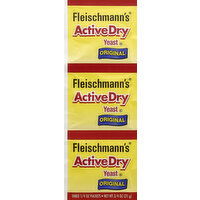
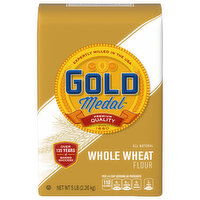
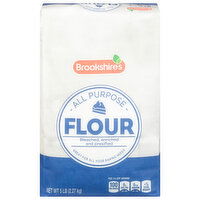
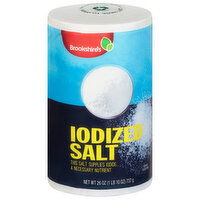
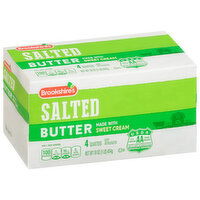
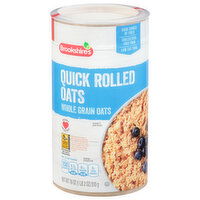
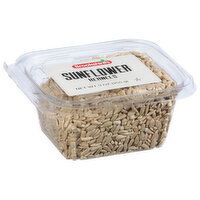
Nutritional Information
Calories: 210, Fat: 4 g (2 g Saturated Fat), Cholesterol: 10 mg, Sodium: 390 mg, Carbohydrates: 35 g, Fiber: 4 g, Protein: 6 g.
Directions
- In a 2-cup measuring cup, combine the honey and water. Sprinkle yeast over the top. Let stand for 5 minutes until mixture is foamy. Stir to combine after foam develops.
- Add both flours to a mixing bowl. Stir in the salt. Pour in the yeast mixture and butter. Stir together until a shaggy dough forms. Turn out onto a lightly floured surface. Knead for 5 to 7 minutes until dough is smooth and feels like all moisture has absorbed. Form the dough into a large ball, and place in a large buttered bowl. Cover with plastic wrap. Place in a warm spot to rise for 1 hour or until it doubles in size.
- After rising, punch down the dough. Turn it out onto a lightly floured surface. Shape into an 8-inch square. Fold in the two sides until they meet in the middle, and press the seam closed. Tuck under the ends over the seam. Roll the dough over. Place in a buttered 9 x 5 loaf pan. Sprinkle the top with a small amount of whole-wheat flour, oats and sunflower seeds. Loosely cover with plastic wrap. Let rise for 45 minutes to 1 hour or until dough is about an inch above the sides of the pan.
- Preheat oven to 375° F. Remove plastic wrap, and place the loaf in the oven. Reduce heat to 350° F. Bake for 45 to 50 minutes, rotating halfway through cooking time, until top is golden and internal temperature reaches 190° F. Let cool in the pan for 15 minutes before turning out onto a wire rack to cool completely.
Tips:
The water should be 100° F to 110° F. Cooler water will not activate the yeast, and hotter water will kill it.
If the mixture doesn’t begin to foam or bubble when yeast is added to water, the yeast is dead or expired. Start over with new yeast.
Salt inhibits yeast growth. Always mix the salt with the flour, not with the yeast and water.
Measure flour carefully. Scoop the flour with a spoon into measuring cups designed for dry ingredients. Level it off, but do not pack it.
Whole-wheat flour is high in protein. The molecules have sharp edges, making the texture of baked goods dense, difficult to rise and sometimes unpalatable. Experiment with a ratio of whole-wheat and all purpose flours to find a combination that fits your taste.
Compound Butters
Pumpkin Spice Butter
- 1/2 cup salted butter, softened
- 1 tsp pumpkin pie spice
- 2 tsp sugar
- 1 Tbs pumpkin puree
Mocha Butter
- 1/2 cup salted butter, softened
- 2 Tbs powdered sugar
- 1 Tbs dark cocoa powder
- 1 1/2 tsp instant espresso powder, dissolved in 1 tsp warm water
- 1/4 tsp vanilla extract
- 1 Tbs honey
Herb Butter
- 1/2 cup salted butter, softened
- 1 tsp chervil, chopped
- 1 tsp tarragon, chopped
- 1 tsp chives, minced
- 1/2 tsp cracked black pepper
Smoky Bacon Butter
- 1/2 cup salted butter, softened
- 1 tsp smoked paprika
- 2 slices cooked bacon, chopped
The Year of the Baked Bread
2020 was the year of discovering and trying new things; and homemade bread quickly became a household favorite. Whether wanting to try something new, impress friends and family or simply have the delicious smell roaming through the house, homemade bread is the perfect way to do it!
Health benefits
From tangy sourdough to hearty rye to classic white, bread provides uncomplicated, fresh flavor with health benefits for our body and mind! The bread we make at home will contain less sodium, less trans-fat and can easily substitute items to make it as healthy as desired.
Wheat bread contains higher amounts of wheat germ, vitamin E, B-vitamins and riboflavin. These are important in turning food into energy and aid the body in many other building block processes.
Think Portions
A serving of bread can vary slightly based on a few different variables; one being the type of bread. A rule of thumb is 1 slice or 1/12 of a loaf (about half an inch thick). Most breads contain an excellent source of fiber and calcium for the body. As far as calories are concerned there is not a major difference between white bread and wheat bread, but that is not true when it comes to nutrients or how our body uses it.
Quick Q&A
Is it bad to eat bread every day?
Moderation is key. Bread contains vitamins and minerals important to the body. It is knowing what type of bread and how much that makes the difference!
Are whole grains better for you?
Whole grain wheat bread contains more fiber than white bread which helps your body slow down the processing of sugar which will cause lower sugar spikes and crashes.
Mental Clarity
Let’s not forget about the importance of our mental health. Mixing ingredients, kneading the dough and watching the rising process of baking can provide positive benefits to our mental and emotional health. Studies have shown baking leads to feeling happier, creative, more relaxed and less anxious while producing a sense of purpose when the product is complete.